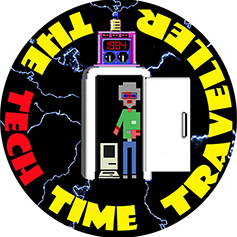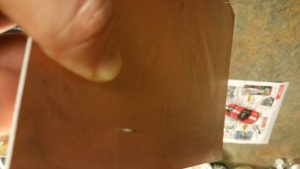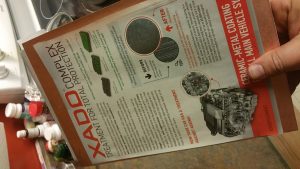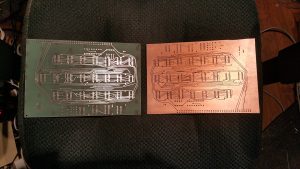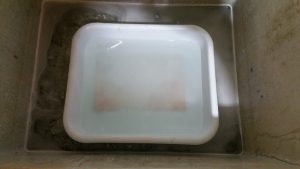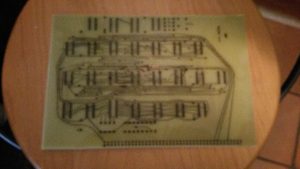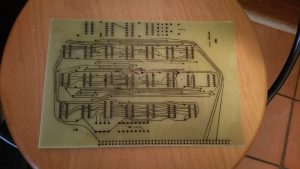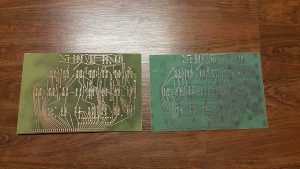Okay so on my last post I had tweaked artwork and set up for trying to make a copy of my Mark-8 CPU board. I got my double-sided copper clad in yesterday and am raring to go!
In terms of process, it’s very similar to what I went through with my TVT boards. The difference this time is I have an original for reference and can be a bit more confident that my work is good.
The first thing was to print out the artwork on my favourite Hot Rod Magazine paper. I don’t know why but this stuff transfers really well.
The challenge with doing a double-sided board is getting both sides to align just-so so that your ICs and components will install easily. This is why I went to some lengths to make sure the artwork matched properly in Photoshop. Now I had to align it on the copper clad.
The strategy I settled on was to drill holes in a couple of IC and resistor pads up top and below. I reasoned that these were so small that if they aligned okay, I knew I’d be good. I then made holes in the appropriate places on the artwork. I used a small piece of wire to go through the PCB and transfer paper and bent on one side to secure. I did this in three locations just to be safe. In the first photo you can see the little pin through on the other side.
Basically from there it was just carefully aligning the transfer sheet for side two to those pins, and once the pins were through bending them to hold it in place. Then I took some scotch tape and pressed it down on the corners to hold. I didn’t want the pins staying in and damaging the iron or ripping the paper, obviously as I ironed.
Ironing went fairly smoothly, however I did note that the resulting heat caused the opposite side I was ironing to actually smudge the toner in a couple of places. Hrmm. Not sure how to get around that. Perhaps having the ironing happening on something cool? The counter top does get pretty hot when I’m doing this.
When I dipped the boards into the cooling bath and removed the paper, I discovered, as usual, the iron had missed in a few places. Almost always does. So I did touching up with nail polish to fill gaps.
Anyway, once that was done, I used my original board (very carefully) as a guide to trace cutting lines so I could cut the board to be the exact same size. Voila, side by side:
Next was etching. I’m still wussing out from using heavier stuff like my ferric chloride. I think I might be getting over that. One problem with using the friendlier vinegar/peroxide/salt etchant is that it takes a ton of it to etch boards this big. I used 6 500ml bottles of peroxide and an equivalent amount of household cleaning vinegar. It took something like 2 hours to etch off the acres of copper on this board that needed to go. And unfortunately that’s too long for the nail polish ‘patches’ to hang on. The nail polish eventually lets go and that copper becomes exposed. I had to apply it again to try and save those traces, but a few were eaten right though.
Overall the result after etching isn’t too bad. Side 2 came out really nice and clean. I think I have to do more work on Side 1’s artwork to make the traces a bit darker and a tiny bit thicker.
Lastly I took some acetone and wiped away the toner. Then I drilled out some of the pads to test how both sides aligned. I’m delighted to say the alignment is just a hair off in a few places. But otherwise, it’s darn near perfect, especially considering the bozo (me) trying to align them.
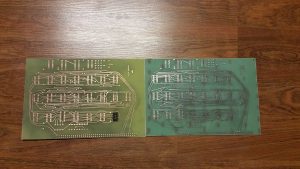
So there you have it. I’m going to use this board as an experiment piece. I want to see if dying it with some blue or green Rit dye gets me a bit closer to the color of the original (right). Then I’ll learn about tinning, and just see how close I can dial it in.
To recap: I need to figure out how to better transfer toner. I’ve stuck with ironing because it has served me well. My laminator did not do a good job and these fancy transfer papers seem to be even less reliable than my magazine paper. I also need to maybe adopt a better etching process. But for a first try, I’m pretty happy. This gives me confidence that the end goal is attainable.
